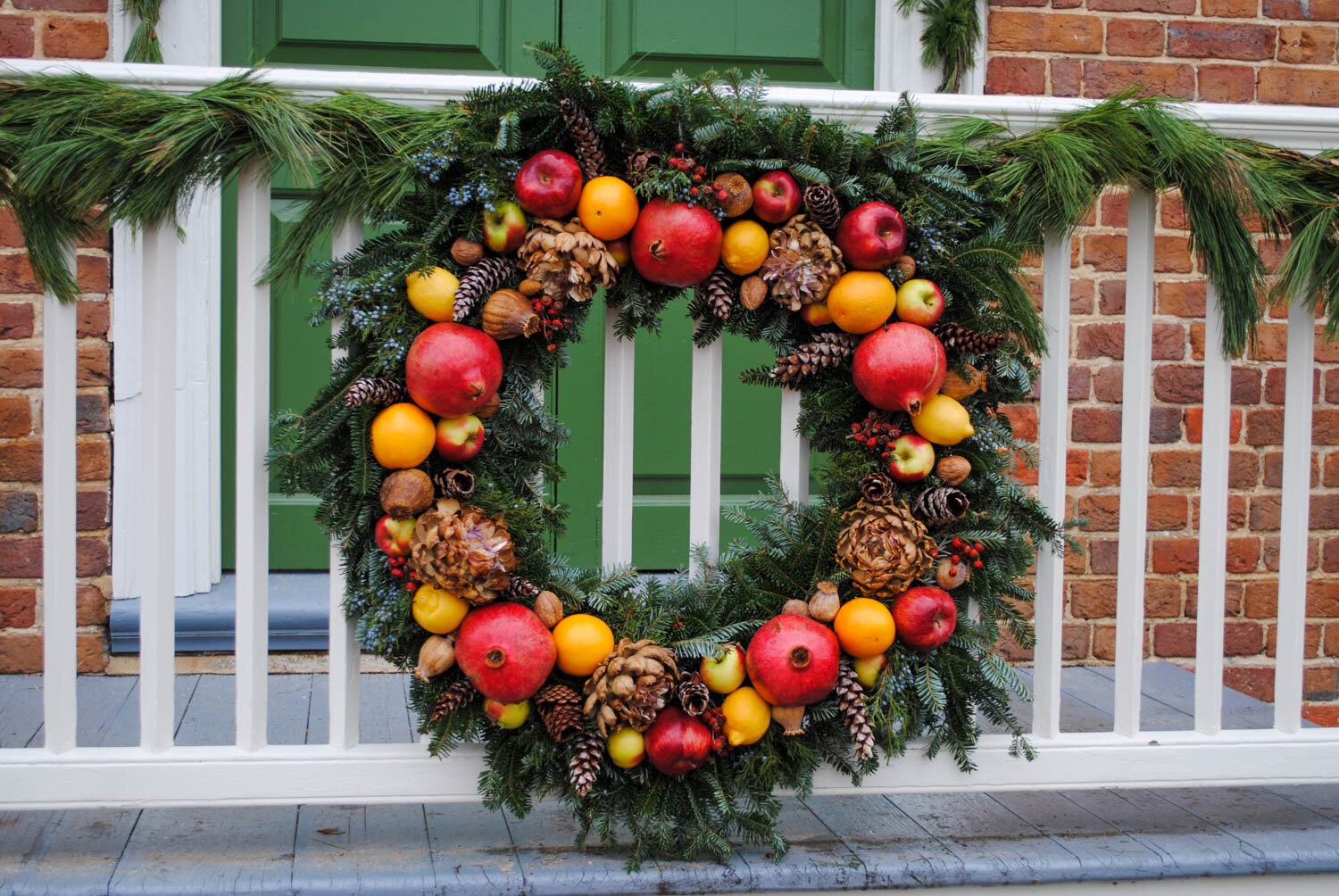This holiday season I’d like to take you back in time to 2010… and the 18th century. Each winter when living in Raleigh, I liked to take a weekend trip to see something Christmasy on the east coast before heading home for the holidays. Ten years ago almost to the day, I planned a Sunday get away to see a rustic, foraged Christmas at Colonial Williamsburg in Virginia. In an age before the crafting of Pinterest and Instagram became more prevalent in our lives, it was so inspiring to see simple, everyday plant parts used in such clever ways to bring a bit of joy and delight to this darker season. And, I return to these photographs each year to see ideas and inspiration I got from my visit. So, enjoy the below photos that I took that dreary day walking the old-timey streets of this historic town.
As you’ll see in these photos, fruits played center stage in many winter arrangements. Here, pomegranates, lemons, and apples are set with dried artichokes and coniferous cones.
The acid green osage orange plays well here with pineapples and apples. Sumac seedheads, wax myrtle fruit, and catalpa pods are up top.
Here the halls are decked with apples and deciduous holly.
Some of the wreaths and designs were a bit less traditional. I loved this banner above the door.
Magnolia leaves were used in many wreaths for their evergreen nature, and I loved how they incorporated clam shells and dried yarrow heads to create a faux magnolia flower in this wreath.
Many decorations were primarily made from dried goods like the chaste tree branches and sunflowers here.
A bundle of wheat makes a striking door accessory.
Here dried plant parts make up the red, white, and blue.
The peels of dried oranges were used to add some zest to this arrangement.
And, here we see slightly dried oranges used as pendulous ornaments with pomegranates and acorns.
Even dried oak leaves were incorporated into some wreaths.
This wreath was my favorite of the day. Not only did I love the use of cotton to simulate smoke, but the color echo of door and wreath and the asymmetry of the cotton with the variegated holly was spot on.
In the south I worry about fruit having holes punctured in them for wreaths. This design solved that problem by wrapping the fruit with colorful fabric.
Occasionally, I saw doors with blue ribbons that were awarded for the most creative designs. To make the designs in the spirit of the place, there were rules like one could only use materials that colonists would have available to them back in the day. So, here you see a fish made out of gingerbread.
This design was another blue ribbon winner. A gingerbread queen bee watched over her hive and honey.
And, I was delighted to see a Star of David with adorning dreidels.
And, I can’t leave showing you photos of horticulture in Williamsburg without a picture of the vegetable garden and the clever techniques displayed for how early gardeners could have extended the harvest! Here you see cut branches, cloches, mulches, and paper frames used to protect early crops. The paper frames were the most interesting to me. From the gardener Wesley Greene, I learned that day they were made from cotton and coated in linseed oil. These designs date back to the 1770’s. So, if colonists can extend the season, so can we.
















